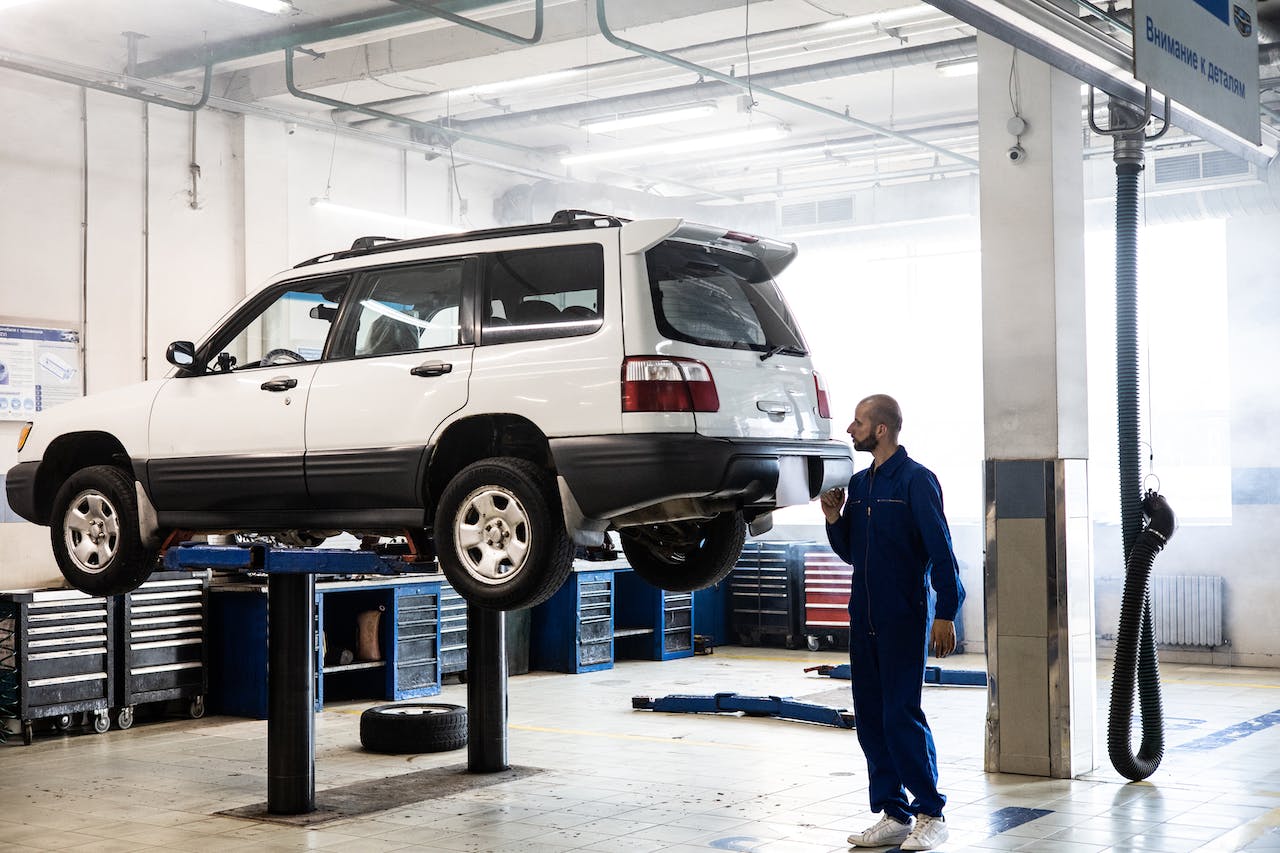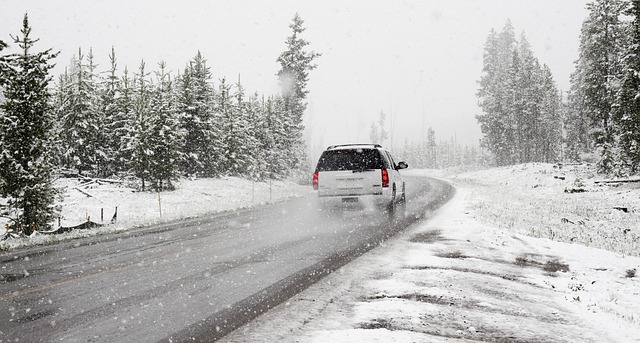Winter brings unique challenges for vehicle maintenance, and even seasoned drivers often make mistakes that can compromise their safety and their car’s performance. Preparing your car for cold weather isn’t just about convenience—it’s about ensuring that you’re safe on the road, protecting your investment, and avoiding costly repairs. Below, we delve into seven surprising winter car maintenance mistakes many people make and provide detailed strategies to help you avoid them.
1. Neglecting Tire Maintenance
The Problem:
Cold temperatures can cause tire pressure to drop, which reduces traction on icy or snowy roads. Underinflated tires wear out faster and increase the risk of accidents due to compromised grip.
Why It Matters:
In winter, proper tire traction is crucial for safety. Without it, you risk skidding or sliding, particularly when roads are covered in snow or ice. Additionally, incorrect tire pressure can decrease fuel efficiency, further adding to your expenses.
Solutions:
- Check Tire Pressure Weekly: As temperatures drop, so does the air pressure in your tires. Use a reliable pressure gauge to check tire pressure at least once a week and inflate your tires to the manufacturer’s recommended levels.
- Switch to Winter Tires: Winter tires are specifically designed to handle low temperatures and offer superior traction on snow and ice. They have deeper treads and softer rubber, which perform better in winter conditions.
- Rotate Tires Regularly: Uneven wear can reduce the effectiveness of your tires. Rotating them every 5,000 to 7,500 miles ensures even wear and prolongs their life.
Pro Tip:
Invest in a set of snow chains if you live in an area prone to heavy snowfalls. They provide extra grip and can be a lifesaver in extreme conditions.
2. Overlooking Fluid Levels
The Problem:
Winter weather can cause engine fluids to thicken or deplete faster, leading to mechanical issues. Fluids like engine oil, coolant, and windshield washer fluid are all essential for your car’s optimal performance.
Why It Matters:
Thicker fluids can strain your engine, while inadequate levels can lead to overheating, freezing, or even engine failure.
Solutions:
- Check Oil Levels: Use winter-grade oil with the right viscosity for cold temperatures. Check your owner’s manual for the manufacturer’s recommendation.
- Top Off Coolant: Ensure your antifreeze mixture is the correct ratio (typically 50/50) to prevent freezing. Check for leaks that could lower coolant levels.
- Use Winter-Grade Washer Fluid: Standard washer fluid can freeze in the reservoir or spray nozzles. Switch to a fluid designed for sub-zero temperatures to ensure your windshield remains clear.
Pro Tip:
Keep an emergency bottle of windshield washer fluid in your trunk, as you’ll likely use it more frequently during winter.
3. Ignoring Battery Health
The Problem:
Cold weather reduces a battery’s capacity to hold a charge, making it harder to start your car. A weak battery is more likely to fail in low temperatures.
Why It Matters:
A dead battery can leave you stranded in freezing conditions. Ensuring your battery is in good condition will save you from unexpected breakdowns.
Solutions:
- Test Your Battery: Before winter sets in, have your battery tested at an auto shop. If it’s more than three years old, consider replacing it.
- Clean the Terminals: Corrosion on battery terminals can impede the flow of electricity. Clean them with a wire brush and apply petroleum jelly to prevent further corrosion.
- Use a Battery Blanket: In extremely cold climates, a battery blanket can keep your battery warm and maintain its charge.
Pro Tip:
Always carry jumper cables or a portable jump starter in your car. These tools can be invaluable if your battery fails unexpectedly.
4. Using Hot Water to De-Ice Windows
The Problem:
Pouring hot water on a frozen windshield seems like a quick fix, but it can cause the glass to crack due to rapid temperature changes.
Why It Matters:
Replacing a cracked windshield is expensive and inconvenient. Taking the right steps to de-ice your windows can save you time and money.
Solutions:
- Use an Ice Scraper: Invest in a high-quality ice scraper and use it to remove frost and ice from your windows.
- Apply De-Icer Spray: Store a can of de-icer spray in your car for quick and effective ice removal.
- Start the Car Early: Turn on your car and set the defroster to the highest setting. This will gradually warm the windshield and make ice easier to remove.
Pro Tip:
Prevent ice buildup by covering your windshield with a frost guard or tarp overnight.

5. Skipping Regular Car Washes
The Problem:
Salt, grime, and road debris accumulate on your car during winter, leading to rust and corrosion—especially on the undercarriage.
Why It Matters:
Rust can damage critical components like brake lines, fuel lines, and suspension parts, leading to costly repairs.
Solutions:
- Wash Your Car Weekly: Regularly wash your car, paying special attention to the undercarriage. Many car washes offer undercarriage cleaning services specifically for winter months.
- Use Wax or Sealant: Apply a coat of wax or paint sealant before winter to protect your car’s exterior from salt and debris.
- Inspect for Rust: Check your car periodically for signs of rust and address it promptly to prevent it from spreading.
Pro Tip:
Choose a touchless car wash to avoid scratches caused by abrasive brushes and tools.
6. Over-Idling the Engine to Warm Up
The Problem:
Many people believe that idling the engine for extended periods is necessary to warm up the car. However, this wastes fuel and can cause engine oil dilution, increasing wear.
Why It Matters:
Excessive idling isn’t just bad for your engine—it’s also bad for the environment and your wallet.
Solutions:
- Idle for 30-60 Seconds: Modern engines warm up more efficiently when driven. After a brief idle, drive gently to allow the engine to reach optimal temperature.
- Use a Remote Starter: If you prefer a warm cabin, a remote starter can heat the interior without over-idling the engine.
Pro Tip:
Check local regulations, as excessive idling may violate anti-idling laws in some areas.
7. Neglecting Windshield Wipers and Washer Fluid
The Problem:
Worn-out wiper blades and inadequate washer fluid can severely impair visibility during snowstorms or when driving on slushy roads.
Why It Matters:
Clear visibility is essential for safe driving in winter conditions. Neglecting your wipers and washer fluid can lead to dangerous situations.
Solutions:
- Replace Wiper Blades: Invest in winter-specific wiper blades designed to handle ice and snow. Replace them at the start of the season.
- Use Winter Washer Fluid: Ensure your washer fluid is rated for sub-zero temperatures to prevent freezing in the reservoir or nozzles.
- Check Spray Nozzles: Make sure the nozzles are clear of ice and debris for effective fluid distribution.
Pro Tip:
Keep extra wiper blades and washer fluid in your car for emergencies.
Final Thoughts:
Winter car maintenance may require extra effort, but it’s essential for your safety and the longevity of your vehicle. By avoiding these common mistakes and following the solutions provided, you’ll be well-prepared to handle winter’s challenges. Stay proactive, and you’ll enjoy peace of mind every time you hit the road in cold weather.
Are You Looking for Expert Winter Car Maintenance?
If you’re in search of a reliable partner for winter car maintenance with a proven track record, look no further than autoTECH Blackhawk. Why trust us to prepare your vehicle for the colder months? We stand out among independent automotive service providers by building strong, lasting relationships with our customers. This approach allows us to tailor our services to meet your unique winter driving needs—keeping you safe and confident on the road, even in harsh conditions.
Whether your goal is to safeguard your car’s performance, enhance cold-weather handling, or simply ensure reliable starts on icy mornings, our team is here to help. We take pride in making sure your vehicle is ready to take on winter, offering valuable guidance on everything from tire selection to fluid checks and engine tune-ups. Plus, we back our work with an industry-leading 3-year/36,000-mile warranty and only use top-quality parts from trusted manufacturers. Reach out to our friendly team today to schedule a convenient and contactless appointment!


